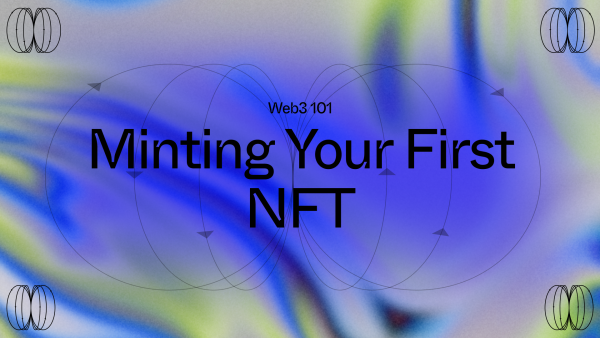How Much Does It Cost to Mint an NFT?


NFTs have the potential to change the way creators work, by offering a new medium for expression, and new monetization paths. With NFTs, artists can sell their work directly to fans and collectors without having to go through traditional channels. This has revolutionized the art world, making it easier for artists to reach and engage larger audiences, and make a living through royalties coded into the art itself.
For artists looking to bring their work to the blockchain, there are plenty of affordable options for minting NFTs — many costing just a few dollars. Below, we’ll walk you through how to mint an NFT, how much it costs, and ways to keep those costs down. What is Minting?
Minting refers to the process of creating a new token on a blockchain. This can be done on a variety of blockchains, but the most popular one for minting NFTs is Ethereum. When a new token is minted, it becomes a digital asset that can be traded, sold, or used in other ways — for example to access experiences, or prove membership of a community. The process of minting usually incurs a cost of some form, such as a fee paid in the native currency of the blockchain. This helps cover the costs of maintaining the blockchain, and provides an incentive for people to participate in the network.
How to Mint an NFT
NFTs are built on top of blockchain technology. That means they're stored on a decentralized ledger, which makes them secure and tamper-proof. However, it also means that transactions can take longer to process during peak periods, and will usually incur a small transaction fee, commonly known as a “gas fee.” Minting your own NFTs is relatively easy. First you should pick the best blockchain for your project. Ethereum is many artists’ first choice, but there are other cost-efficient blockchains to choose from too. Next, decide what kind of digital asset you want to create. This could be anything from a piece of artwork to a video clip. Once you've decided on your asset, you'll need to create a digital file of it. This is the file that will be minted as your NFT. To mint your NFT, upload your file to a platform operating on your preferred blockchain and pay a small fee for transaction verification. Here’s a guide on How to mint your next NFT on the Palm network, via the Portion platform. The Palm network offers connectivity to Ethereum with zero gas fees. Where to Store Your NFTs
As digital assets, NFTs are stored on the blockchain. Access to your NFTs is controlled using a digital wallet. Through your wallet, you can authorize transactions such as buying, selling or transferring your NFTs. Most are categorized as a “hot wallet” or a “cold wallet,” also known as a hardware wallet. A hot wallet is a browser-based digital wallet that is accessible online. There are a few different options available, but the most popular is MetaMask. MetaMask allows you to store your NFTs (and other digital assets) in a secure way. It's also free to use. Another option is hardware wallets such as Ledger or Trezor. Also known as “cold wallets,” these devices provide extra security by storing your private keys offline, making it virtually impossible for hackers to steal your NFTs. However, they can be expensive, and they're not always compatible with all types of NFTs.
Ultimately, the best storage solution for your NFTs will depend on your individual needs and preferences. If you're just starting out, a simple software wallet may be all you need. But if you're looking for maximum security for your collection, a hardware wallet is the way to go. Whichever option you choose, make sure to do your research so you can be sure your NFTs are safe and sound. And never, ever record your private keys online!
The Cost of Minting an NFT
The cost of minting an NFT varies depending on the blockchain you're using. Minting an NFT on Ethereum costs more during peak periods, when gas fees are higher. Choosing an Ethereum-compatible sidechain like the Palm network can be cheaper and more energy efficient. The Palm network is a new token-powered ecosystem for NFTs. It’s connected to Ethereum, and features low gas costs and fast transaction finality.
Although the process of minting an NFT is relatively simple, it does require you to have a digital wallet set up, and some cryptocurrency in that wallet to cover any fees associated with minting. With the right knowledge and tools, anyone can start minting their own unique digital assets and bring their art and creativity to the blockchain.







